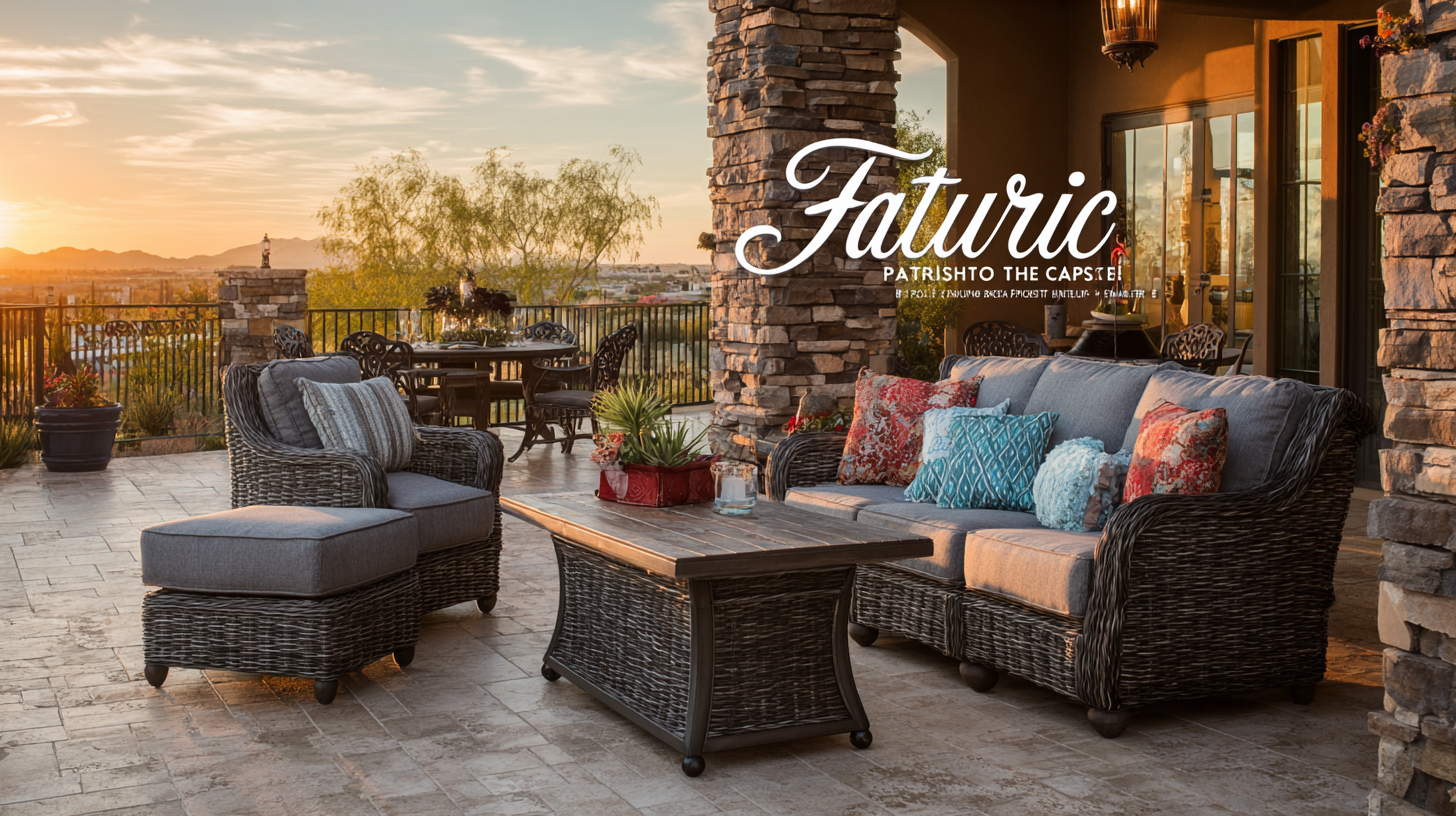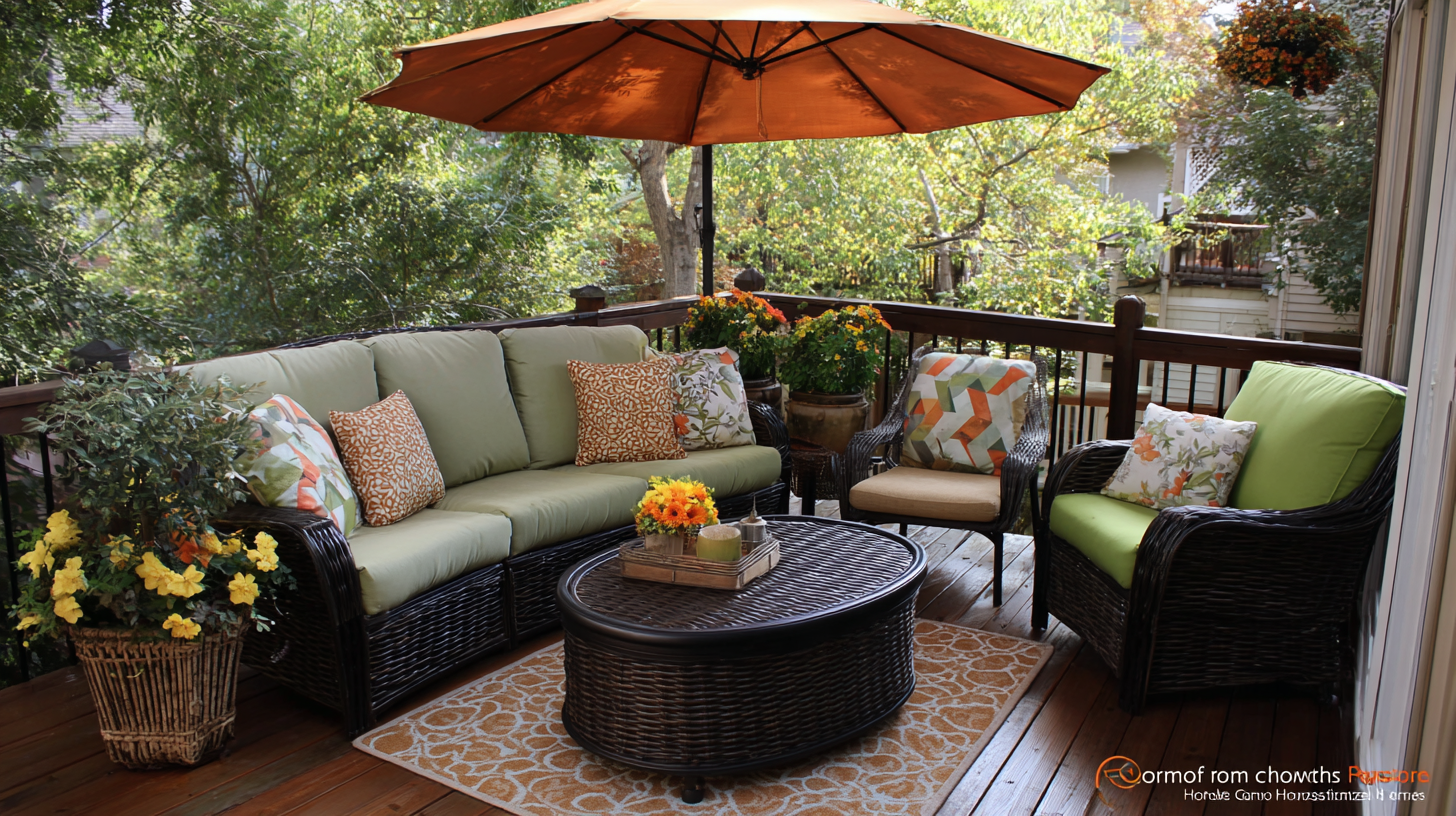Common Issues with Choosing the Best Patio Furniture for Your Home
When it comes to enhancing outdoor living spaces, selecting the right patio furniture is crucial for both functionality and aesthetics. According to a recent report from Furniture Today, the outdoor furniture market is expected to reach $10.8 billion by 2025, fueled by growing consumer interest in outdoor relaxation and entertaining.
However, many homeowners face common issues while choosing patio furniture, such as weather resistance, durability, ergonomic design, and style coherence with existing decor. Additionally, the rise of "Made in China" products has led to an influx of options featuring competitive pricing and varying quality, making it essential for consumers to prioritize quality assurance in their selections.
Understanding these challenges is key to making informed choices that will transform outdoor spaces into comfortable retreats.
Common Mistakes Homeowners Make When Selecting Patio Furniture
When selecting patio furniture, homeowners often make common mistakes that can detract from the enjoyment of their outdoor spaces. One major pitfall is failing to consider the size and scale of the furniture in relation to the patio area. Oversized pieces can overwhelm a small space, while tiny furniture can get lost in a larger area. It's essential to measure your patio before making purchases to ensure the furniture fits harmoniously within the environment.

Another common error is neglecting the durability and maintenance needs of the chosen materials. Many homeowners opt for beautiful but high-maintenance options, leading to frustration and additional costs over time. Instead, selecting materials that can withstand the elements while still offering aesthetic appeal should be a priority. Lastly, it's easy to overlook comfort when making selections based solely on style. Before finalizing your purchase, sit on the furniture to ensure it meets both functional and comfort requirements, allowing for relaxation and enjoyment in your outdoor sanctuary.
Understanding the Importance of Material Durability in Patio Furniture Choices
When it comes to selecting patio furniture, material durability is a crucial factor that should not be overlooked. A study by the American Society for Testing and Materials indicates that outdoor furniture made from high-density polyethylene (HDPE) can withstand the elements better than traditional wood options. For instance, furniture constructed from recycled HDPE retains its aesthetic appeal while providing long-lasting durability. This type of material is resistant to fading, cracking, and splintering, making it ideal for outdoor use, especially in harsher climates.
Furthermore, industry experts emphasize the importance of choosing materials that can endure summer heat and moisture. Metal furniture, particularly those with finishes designed for outdoor use, excel in durability and maintenance. For example, teak and aluminum tables have been shown to resist warping and weather-related damage, making them excellent choices for outdoor dining. In fact, a recent survey found that consumers report spending up to 40% more on durable patio furniture, noting that the investment leads to less frequent replacements and repairs. This highlights a growing trend in the market, where durability not only enhances the longevity of outdoor spaces but also elevates overall aesthetics.

Key Trends in Patio Furniture Styles and Their Impact on Outdoor Aesthetics
When it comes to enhancing outdoor aesthetics, understanding key trends in patio furniture styles is essential. According to the latest report from the American Institute of Architects, contemporary designs have surged in popularity, with outdoor spaces increasingly being treated as extensions of indoor living areas. Minimalist aesthetics, featuring clean lines and neutral colors, are dominating market trends, appealing to homeowners seeking a seamless blend with nature. This year alone, research indicates a 25% increase in sales of modern patio furniture, emphasizing the shift toward simplicity and elegance in outdoor designs.
Furthermore, sustainability has become a significant influence on style choices. A recent survey by the International Casual Furnishings Association revealed that 70% of consumers prefer eco-friendly materials when purchasing outdoor furniture. This shift aligns with a broader movement towards sustainable living, as more brands introduce collections made from recycled or responsibly sourced materials. Innovative designs that combine functionality and sustainability not only enhance the visual appeal of outdoor spaces but also cater to the growing demographic of environmentally conscious consumers. As these trends continue to evolve, they will undoubtedly shape the future of patio furniture and outdoor living aesthetics.
Common Issues with Choosing the Best Patio Furniture for Your Home - Key Trends in Patio Furniture Styles and Their Impact on Outdoor Aesthetics
| Style |
Material |
Durability |
Maintenance Requirements |
Price Range |
| Modern |
Aluminum |
High |
Low |
$500 - $1500 |
| Rustic |
Wood |
Medium |
Medium |
$300 - $1200 |
| Transitional |
Wicker |
Medium |
High |
$400 - $1300 |
| Classic |
Teak |
Very High |
Low |
$800 - $2500 |
| Contemporary |
Stainless Steel |
High |
Low |
$700 - $1800 |
How to Balance Comfort and Functionality in Your Patio Furniture Selection
When selecting patio furniture, striking a balance between comfort and functionality is crucial for creating an inviting outdoor space. According to a survey by the American Society of Landscape Architects, 70% of homeowners prioritize comfort over aesthetics. Soft cushions and ergonomic designs enhance relaxation, making it essential to choose materials that offer both support and durability. Consider options like weather-resistant wicker or cushioned seating that retains its shape while withstanding the elements.
**Tip:** Always check fabric ratings for UV resistance and water repellency to ensure longevity. A strong frame, such as aluminum or teak, can also withstand various weather conditions while providing a comfortable seating experience.
Functionality also plays a pivotal role in your selection. Multi-functional furniture, such as benches with storage or tables that can expand, maximizes your outdoor area, especially for smaller patios. The latest trends indicate that integrated features are becoming increasingly popular. According to data from the International Casual Furnishings Association, nearly 60% of consumers now prefer furniture that incorporates technology, like built-in speakers or charging stations, maintaining both usability and enjoyment.
**Tip:** Look for adjustable furniture pieces that cater to various activities, from casual lounging to dining, ensuring your patio can adapt to different occasions.
Common Issues with Choosing the Best Patio Furniture
This chart illustrates common factors affecting the selection of patio furniture, focusing on comfort, functionality, and aesthetics.
Evaluating Cost vs. Quality: Making Informed Investments in Patio Furniture
When selecting patio furniture, finding the right balance between cost and quality is crucial. According to a report by the American Society of Landscape Architects, outdoor furniture can account for up to 15% of a homeowner's landscaping budget. This statistic highlights the importance of making informed decisions that align with your long-term investment goals. Investing in high-quality materials often pays dividends, as durable options like teak, aluminum, and resin can last for many years without requiring frequent replacement, which can ultimately save money over time.
Moreover, data from the National Association of Home Builders estimates that homeowners who prioritize quality patio furniture enhance their outdoor living space's value by up to 20%. This demonstrates that while cheaper alternatives may seem appealing at first, they often fall short in terms of durability and comfort, leading to additional costs down the line. By evaluating your needs and considering the lifespan of the materials, you can make smarter spending choices that not only fit your budget but also elevate your outdoor experience for years to come.

Home
About Us
Products
Engineering Case
Buyer Service
News
Blog
Contact Us




